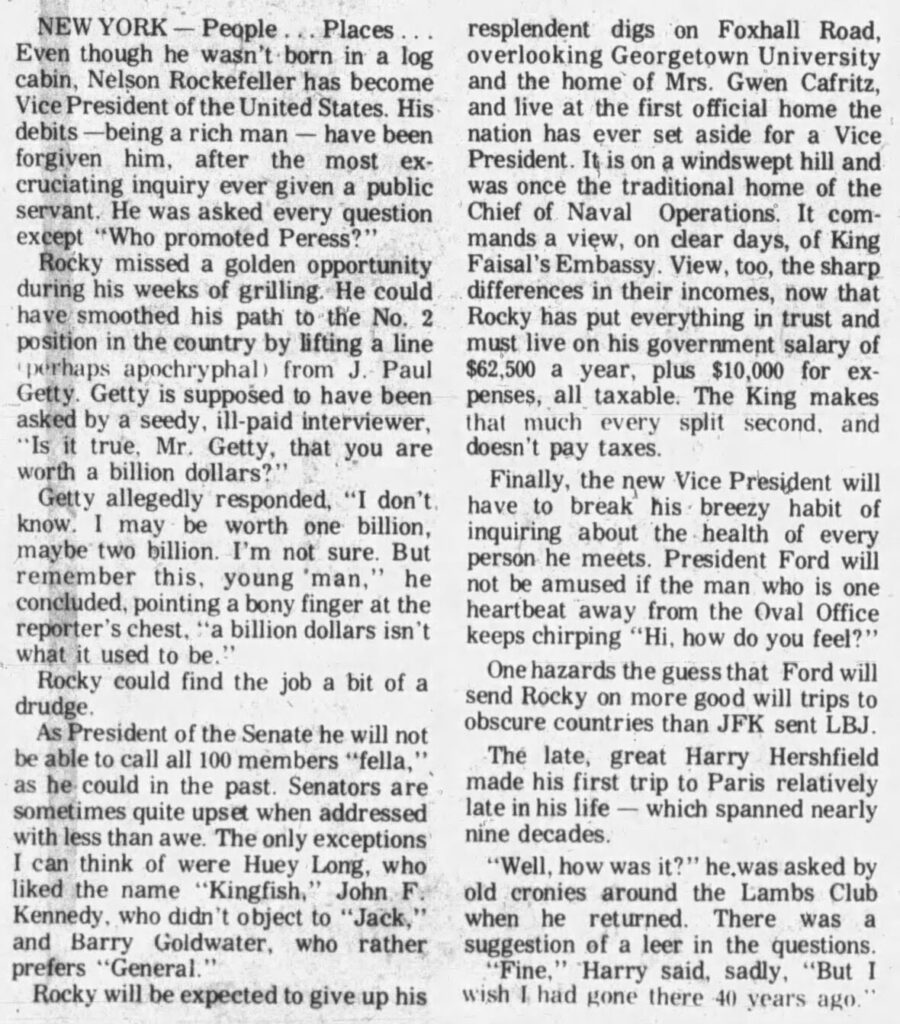21 Mar How Many Times Was The Vice Presidency Vacant?
Contents
HOW MANY TIMES WAS THE VICE PRESIDENCY VACANT?
 The Society of Presidential Descendants Panel highlighted that there were long periods when we had no Vice President since both Taft and Truman inherited the Presidency. The vice presidency has been vacant 18 times, totaling 38 years. The occurrence was due to the death or resignation of the Vice President or when the Vice President assumed the Presidency after the death or resignation of the President.
The Society of Presidential Descendants Panel highlighted that there were long periods when we had no Vice President since both Taft and Truman inherited the Presidency. The vice presidency has been vacant 18 times, totaling 38 years. The occurrence was due to the death or resignation of the Vice President or when the Vice President assumed the Presidency after the death or resignation of the President.
Here are the periods of Vice President Vacancy:
1. April 20, 1812 – March 4, 1813, when George Clinton died (see previous story).
2. November 23, 1814 – March 4, 1817, Clinton’s successor, the elected Elbridge Gerry (as in gerrymandering), died in office.
3. December 28, 1832 – March 4, 1833, John C. Calhoun, who, along with George Clinton, was the only Vice President to serve under two presidents, resigned as the lame-duck vice-president so he could be appointed to a vacant South Carolina U.S. Senate seat.
4. April 4, 1841 – March 4, 1845, John Tyler succeeded William Henry Harrison, the first president to die in office. There was no formal provision for appointing a new Vice President. There was some controversy on how to proceed. Tyler’s model has been followed since.
5. July 9, 1850 – March 4, 1853, Millard Fillmore succeeded Taylor when he died in office.
6. April 18, 1853 – March 4, 1857, William R. King died after less than two months served.
7. April 15, 1865 – March 4, 1869, Andrew Johnson succeeded Lincoln after his assassination.
8. November 22, 1875 – March 4, 1877, Henry Wilson died in office.
9. September 19, 1881 – March 4, 1885, Chester Arthur succeeded Garfield after his assassination.
10. November 25, 1885 – March 4, 1889, Thomas Hendricks died in office.
11. November 21, 1899 – March 4, 1901, Garret Hobart died in office
12. September 14, 1901 – March 4, 1905, Theodore Roosevelt succeeded McKinley after his assassination.
13. October 30, 1912 – March 4, 1913, James Sherman died in office.
14. August 2, 1923 – March 4, 1925, Calvin Coolidge succeeded Harding when he died in office.
15. April 12, 1945 – January 20, 1949, Harry Truman succeeded Franklin Roosevelt when he died in office.
16. November 22, 1963 – January 20, 1965, Lyndon Johnson succeeded Kennedy after his assassination.
17. October 10 – December 6, 1971, Spiro Agnew resigned.
18. August 9 – December 19, 1974, Gerald Ford succeeded Nixon, who resigned. Nelson Rockefeller was selected as Vice President, the first under the 29th Amendment, pictured above as the first Vice President assuming the position amid presidential term.
Ancestry, Genealogy, and Family Tree Research.


